Cashel then Fermoy for the night - 21 April 2023

21 April 2023 - St Mullins, Rock of Cashel, Lidl carpark in Fermoy!
Had a very peaceful night, listening to the weir.
We’ve been super lucky with the weather today 🙂 By 09.30 we were out on our bikes, cycling alongside the river/canal Barrow to go to St Mullins. (9.5 miles today)




Very much like being alongside the French canals, except we had a grassy, bumpy path instead of the flat towpaths. We didn’t think the canal bits were navigable, but spoke to a man at one of the locks who said they would be cleared out again for the season.


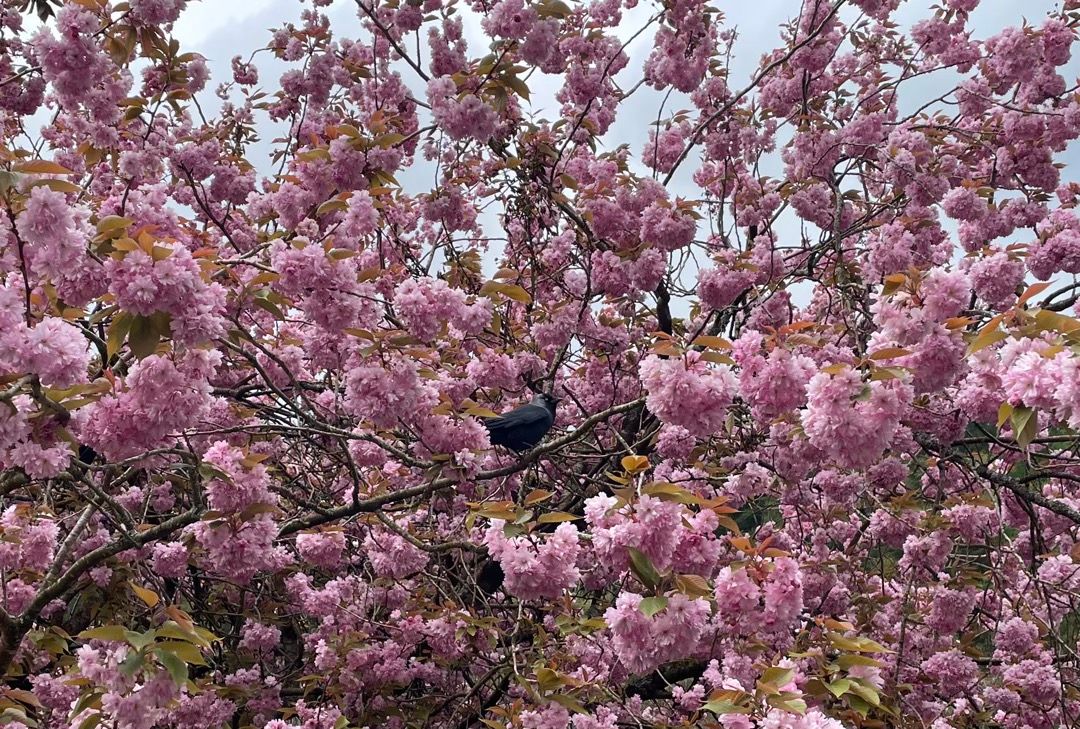





Bob & Val had recommended the Mullichain cafe, so after a 45 minute ride we arrived. A man was chopping some wood outside, we asked what time he opened, he replied - when do you want me to?! Mark very kindly opened up 45 minutes early for us once he’d chopped the wood for the fire inside! He had a cute 5 month puppy called Maud who hadn’t learnt commands yet!
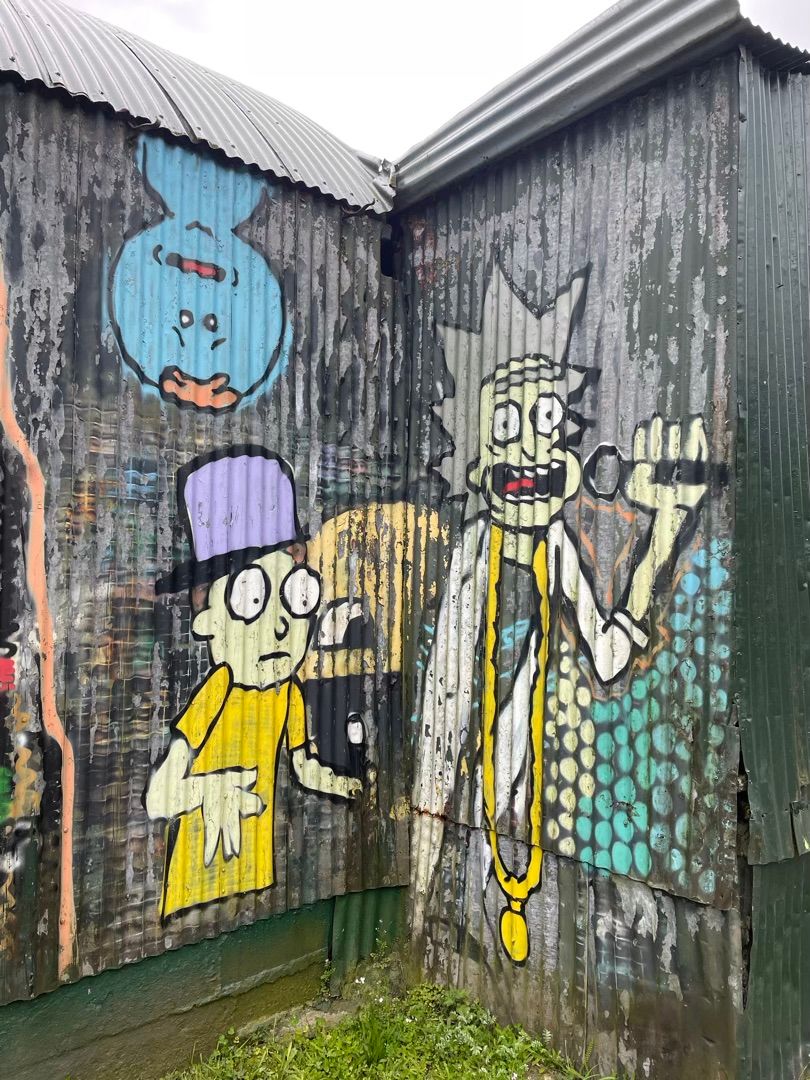

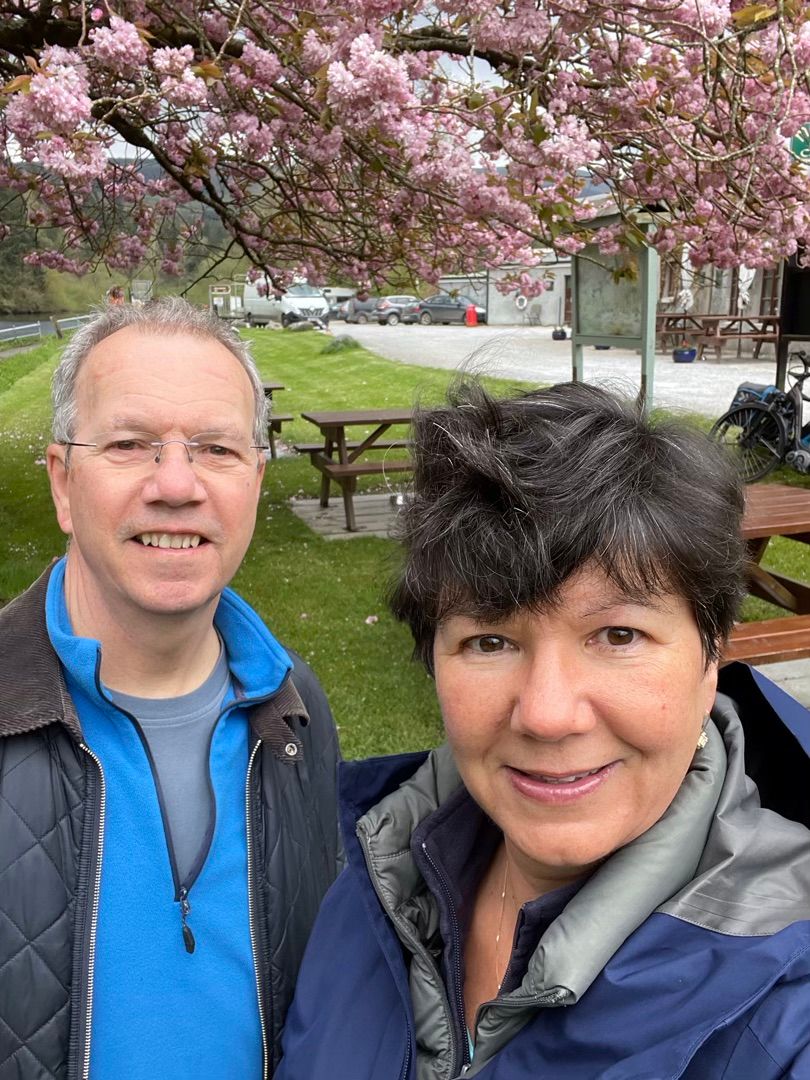






One coffee and a hot chocolate later, and we rode back.

I’m feeling like a Michelin woman today - four layers including two coats, because it’s both been cold (maximum of about 11°), plus it was due to rain!
You can’t see from the photo, but the cows had managed to get under the electric fence to get to the water - just glad one didn’t slip in whilst drinking.

Still can’t get over how friendly people are, some of the people kayaking shouted out ‘how are ya’, or enjoy your cycle!


Even saw a yellow wagtail, a first for us!
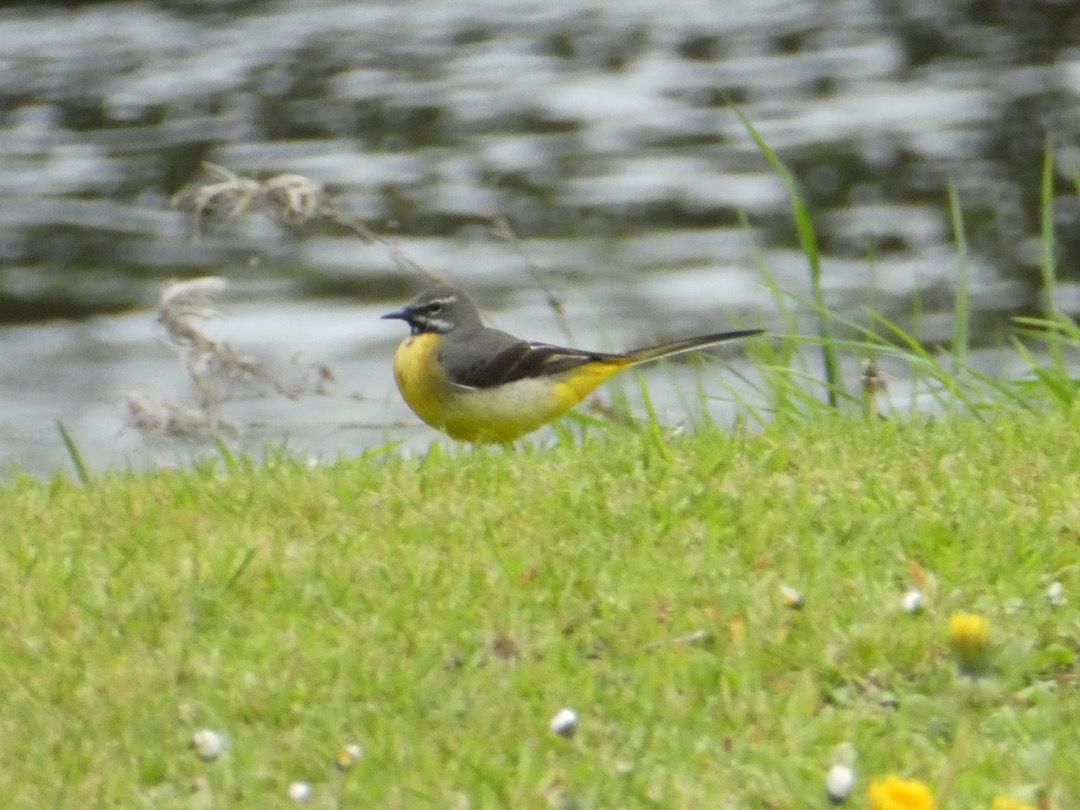
Once back we serviced Dave. Not bad - 8 showers plus washing up in the end on 100 litres. To be honest, we were glad to top up again, as our water didn’t smell that great. We’ve had it once before a couple of years ago. Dave is put away clean, but before we use him again, Tintin flushes out the tanks with Puriclean, rinses a couple of times, then fills up. On the basis showering and cups of tea hadn’t made us sick - we had survived, hopefully all good now. We paid our €2 for a little bit of recycling. Won’t ever complain about our rubbish collection system in Guernsey again!
The man who checked us in very kindly said we could use the services for free if we ever need to again. Now knowing how few and far between moho ‘Aires’ are - we might have to.
Tintin drove today, unfortunately retracing our drive from yesterday for about 15 minutes, as Graiguenamanagh was the only place for miles around we could find with services.
Took nearly 2 hours on a mixture on the small roads, then wider ones until we arrived at The Rock of Cashel in Tipperary. Entrance fee was €8 each, and parking was €4.50.









This was the seat of the ancient kings of Munster (c. AD 300 - 1100), and where St Patrick baptized King Aengus in about AD 450. Strategically located and perfect for fortification, the Rock was fought over by local clans for hundreds of years. Finally, in 1101, clever Murtagh O’Brien gave the Rock to the Church.
His seemingly benevolent donation increased his influence with the Church, while preventing his rivals, the powerful Mc-Carthy clan, from regaining possession of the Rock. As Cashel evolved into an ecclesiastical centre, Iron Age ring forts and thatch dwellings gave way to the majestic stone church buildings we saw today.
Included in the admission fee was a 40 minute guided tour. First we watched a video to get some background. Our guide today was Niall.
The area is a compact tangle of three dramatic architectural styles, early Christian (round tower and St Patrick’s high cross), Romanesque (Cormac’s Chapel) and Gothic (main cathedral).
The Hall of the Vicars Choral was built in the early 1400s - this housed the minor clerics appointed to sing during cathedral services. The large wall tapestry shows the King of Solomon with the Queen of Sheba. Niall said that people weren’t godly enough to be shown without defect, eg the woman on the right has a six pack, the man on the left has the wrong leg showing - weird - didn’t notice until it was pointed out!
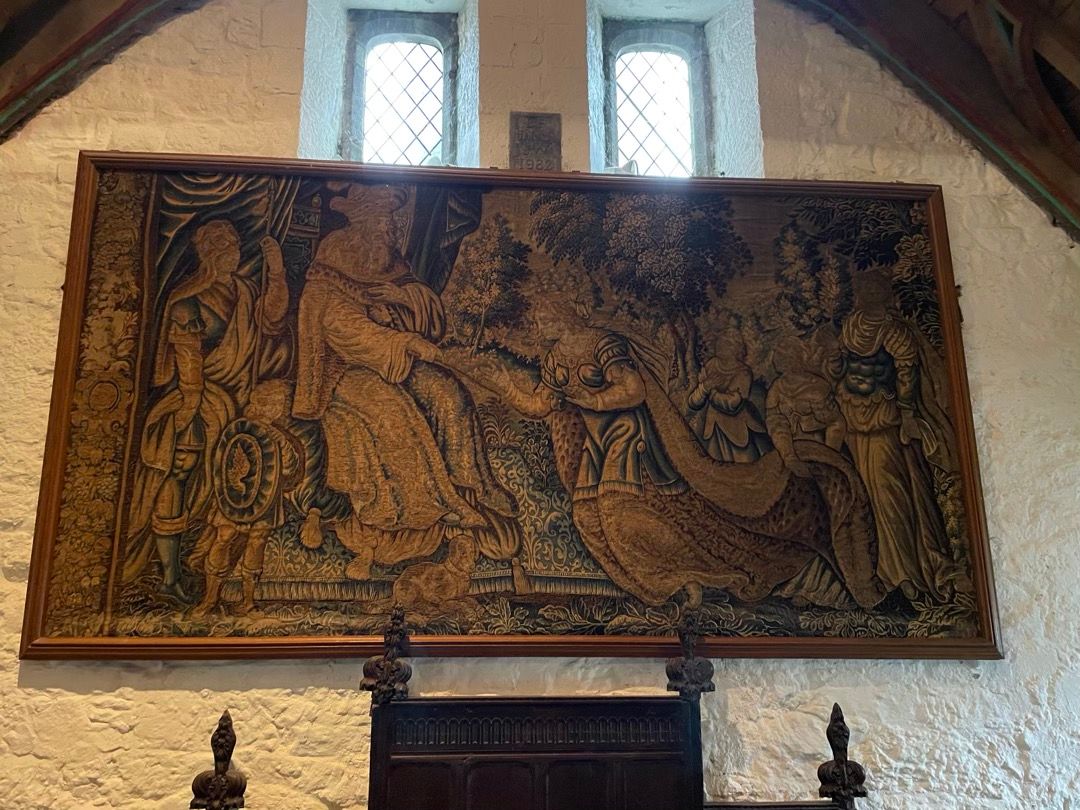
The vicars who formed a sort of corporate body to assist the bishop with local administration, used a special seal to authorize documents, such as land leases. It was a good system - until some of the greedier vicars duplicated the seal for their own less holy purposes, forcing the archbishop to curtail its use - the start of money laundering?!

The cross is a copy of the 12th century one. Typical Irish high crosses use a ring around the cross head to support the arms and to symbolize the sun - making Christianity more appealing to the sun-worshipping Celts. This cross uses the Latin design - the weight of the arms was supported by two vertical beams on each side of the main shaft, representing the two criminals who were crucified beside Christ (who was dressed).

King Cormac MacCarthy chapel was constructed in 1134, and used some influences from France and Germany, Niall suggested as his way to be closer to the Pope!

On the arched doorway, what looks to be a hippo is actually an ox, representing Gospel author St Luke. The door on the other side is a lion, however, because of the close proximity of the cathedral - it can’t be seen.


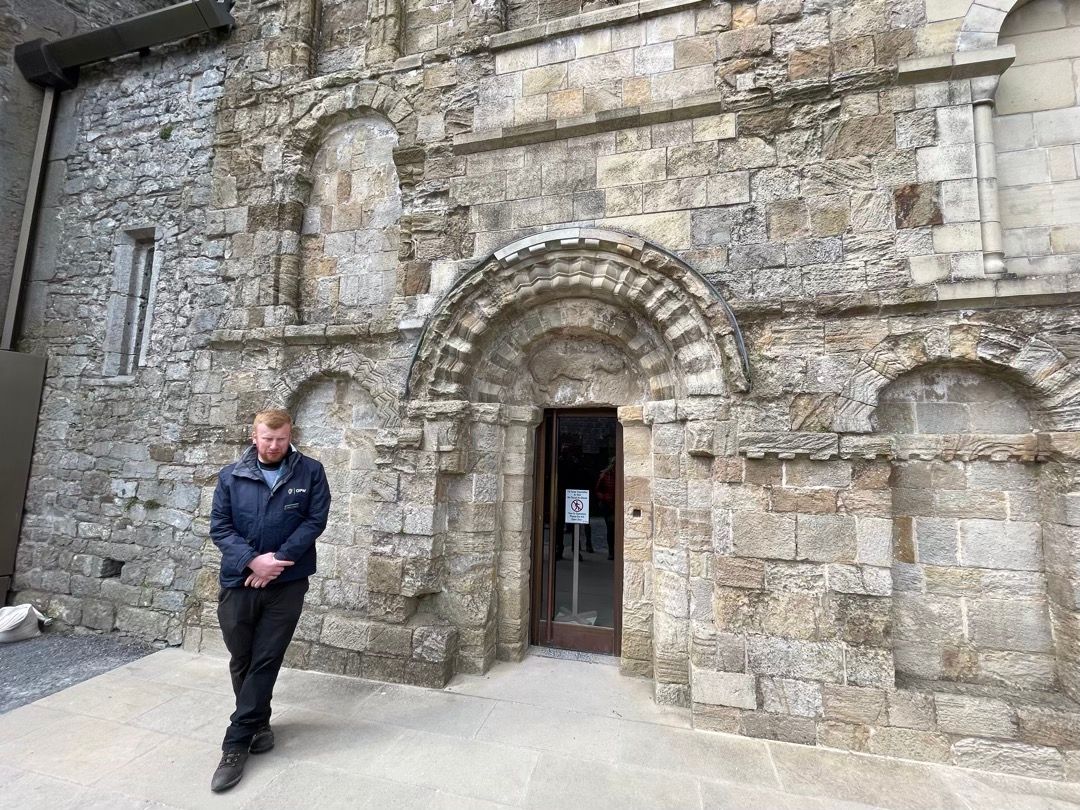

The building is limestone, and because of the tendency to wet weather in Ireland, it’s recently had work done to preserve it. It had scaffolding and protection up for nearly a decade with a ventilation system to help dry out the stone - it’s worked - the limestone is back to its lovely colour.
In the distance you can see the ruined 13th century Hore Abbey. Niall said that Monks used to wear white robes and were called hore monks, hence we get to hore frost because the frost is white…
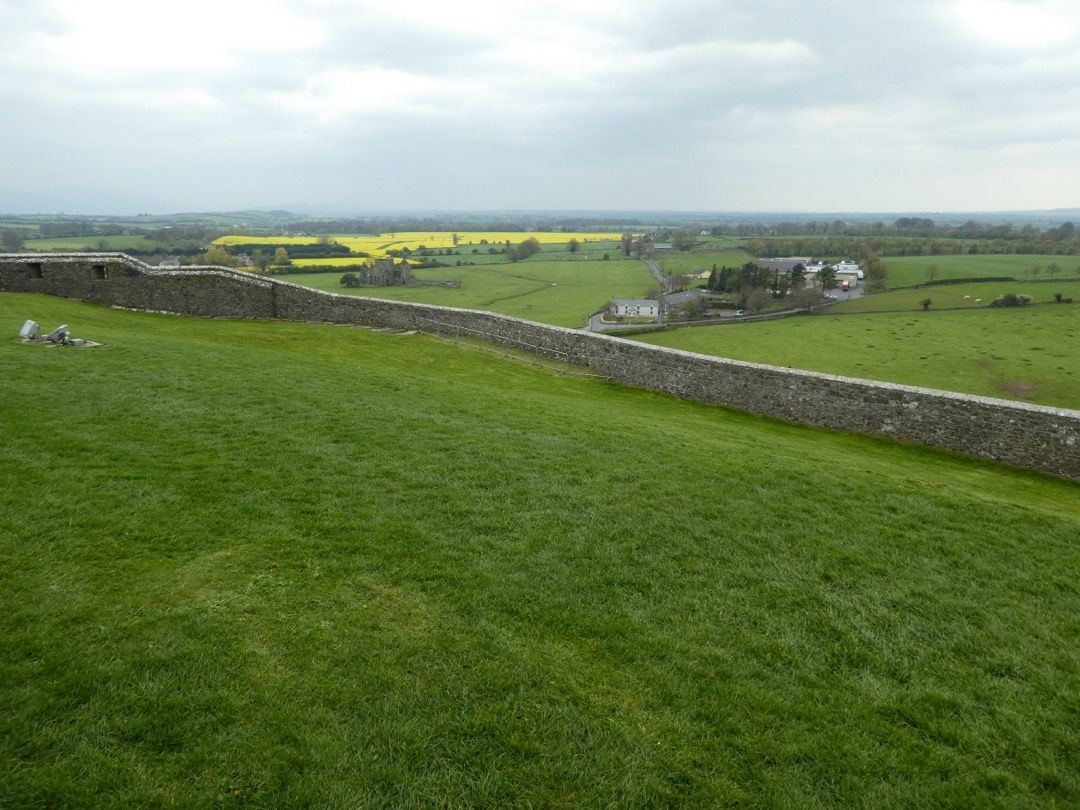


The shape of the round tower is unique to Ireland. They weren’t intended to be places to hide in the event of invasion, but instead as bell towers and lookout posts. It’s 92 feet tall (not quite the tallest in Ireland!) and it’s walls are more than 3 feet thick. The doorway, which once had a rope ladder, was built up high, not only for security, but having it ground level would have weakened the foundation of the top heavy structure.



On the exterior walls are square ‘put-log’ holes. During construction, wooden scaffolding was anchored into these holes, after the structure was completed, the builders sawed off the scaffolding, leaving small blocks of wood embedded in the walls. With time, the wood rotted away, and now the holes are a favourite spot for birds to build their nests!



Churches traditionally face East towards Jerusalem and the rising sun. Because this cathedral was squeezed between the preexisting chapel, round tower and drinking well, to make it face East the builders were forced to improvise by giving it a cramped nave and extra long choir.



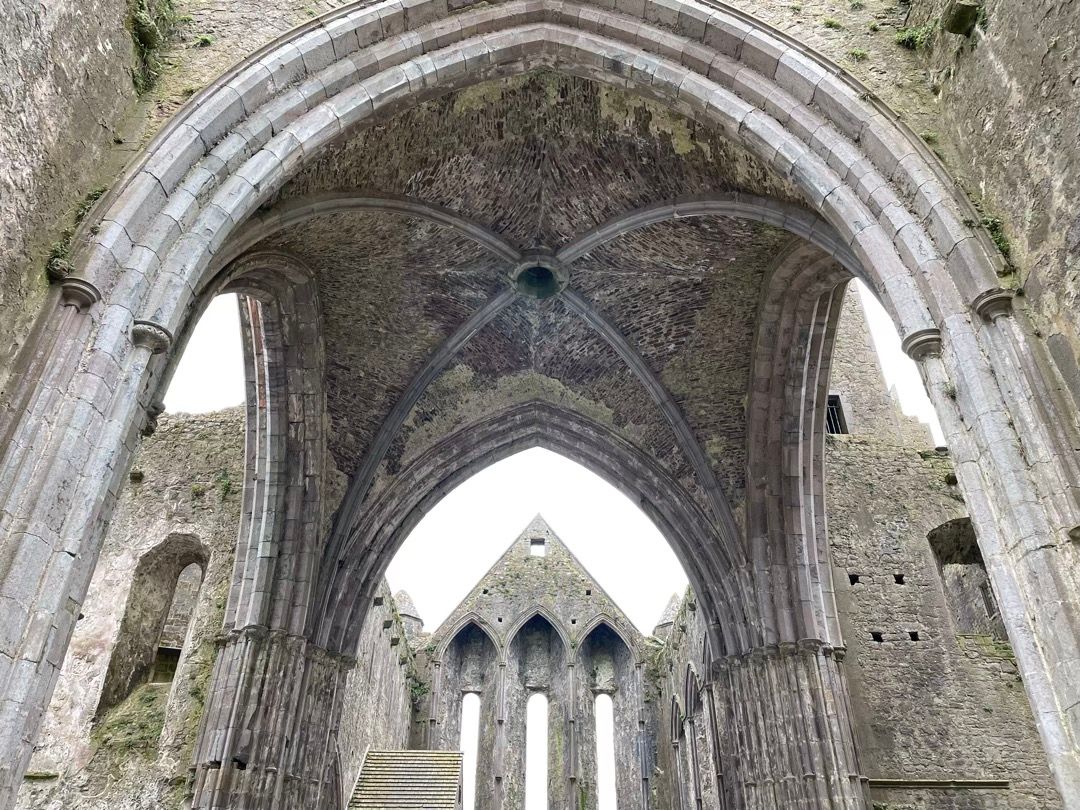
It was built between 1230 and 1290 in a Gothic style. When the Protestant Lord Inchiquin (who became one of Oliver Cromwell’s generals) attacked the Catholic town in 1647, hundreds of townsfolk fled to the sanctuary of this cathedral. Inchiquin packed turf around the exterior and burned the cathedral down, massacring those inside. In the mid 1700s, the archbishop abandoned the drafty rock for a more comfortable residence.
One of the big tombs inside has the remains of the ‘scoundrel of Cashel’ - archbishop Miler Magrath. He basically changed between being Protestant or Catholic - whatever suited best. He married twice, had over 40 children, not just with his wives - and lived to be 100 - not bad for the 1600s!
We enjoyed our visit - having a tour guide brings it to life - so much better value than Jerpoint Abbey - only yesterday!
Tintin took the drone up again for a different view.





He then drove - we struggled to know where to go. Reviews on Park4nignt said some places nearby we selected weren’t suitable for Dave, daytime only, height barrier etc. Found a carpark in Fermoy about 45 minutes drive away. Arrived, quite sloping, was now paid parking - didn’t look very nice. Were trying another place another 20 minutes away, but saw a flat, big Lidl carpark. I hopped out and went and asked if we could park the night, so here we are!
It had just started to drizzle a little bit when left Cashel - so perfect timing as far as we’re concerned. It’s a bit worrying - it’s due to get colder in the next few days - a high of 7°! - what’s that all about?! Maybe Spain would have been a warmer experience! Think we’ll have to get some more gas tomorrow, so we can have the heating on!




Comments ()